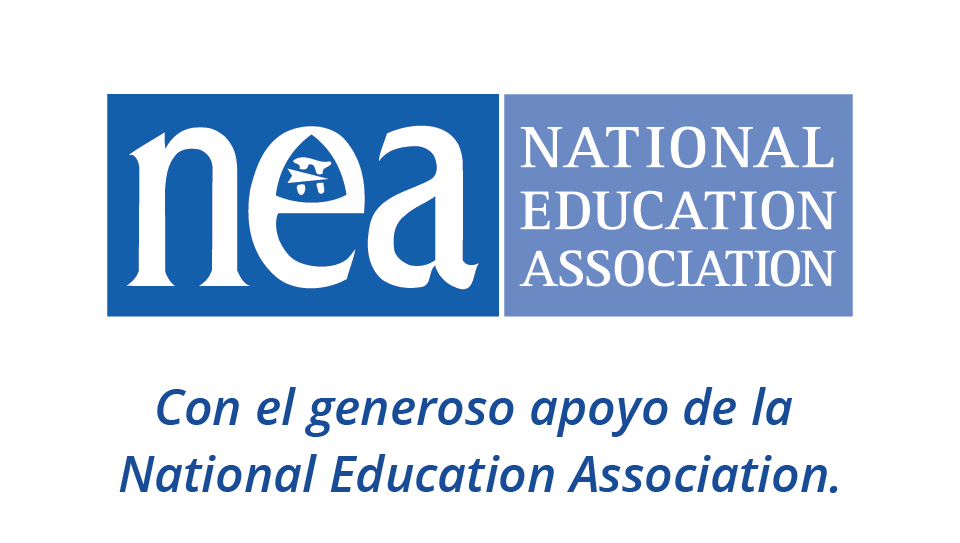Es probable que sus estudiantes que están aprendiendo inglés (ELL) provengan de una cultura con tradiciones y valores familiares distintos de la cultura dominante estadounidense. Estos niños no sólo tienen el desafío de aprender una lengua nueva sino también de adaptarse a un entorno cultural y a un sistema escolar desconocidos. Imagínese cómo sería entrar en un aula extranjera donde usted no entendiera el idioma, las reglas, las rutinas o el comportamiento esperado. Día tras día, los estudiantes ELL se adaptan a nuevas formas de decir y hacer cosas. Como su maestra, usted es un lazo importante para vincularlos con esta cultura y sistema escolar desconocidos. Hay varias cosas que usted puede hacer para que las transiciones de los alumnos ELL sean lo menos complicadas posibles.
Etapas de adaptación cultural
Del mismo modo que los estudiantes ELL atraviesan etapas de aprendizaje del idioma inglés, también pueden pasar por etapas de adaptación cultural. Sin embargo, estas etapas pueden ser menos definidas y más difíciles de notar. Si conoce estas etapas, puede comprender mejor las acciones y reacciones "inusuales" que quizá sólo sean parte de la adaptación a una nueva cultura.
- Euforia: Los estudiantes ELL pueden experimentar un período inicial de emoción acerca de su nuevo entorno.
- Choque cultural: Los estudiantes ELL pueden experimentar ira, hostilidad, frustración, nostalgia del hogar o resentimiento hacia la nueva cultura.
- Aceptación: Los estudiantes ELL gradualmente aceptan su nuevo entorno.
- Asimilación /adaptación: Los estudiantes ELL aceptan y se adaptan a su entorno y a su "nueva" cultura.
Estrategias del aula: Ayudar a sus estudiantes ELL a adaptarse a su nuevo entorno
Aunque no hay técnicas de enseñanza específicas para hacer que los estudiantes ELL sientan que pertenecen a una nueva cultura, hay cosas que usted puede hacer para que se sientan bienvenidos en el aula.
Aprenda sus nombres
Tómese tiempo para aprender a pronunciar los nombres de sus estudiantes ELL correctamente. Pídales que digan su nombre. Escuche atentamente y repítalo hasta aprenderlo. Si el nombre de un estudiante es Pedro, asegúrese de no llamarlo /peedro/ o Peter. Además, practique la pronunciación correcta de los nombres de los estudiantes ELL con la clase para que todos los compañeros lo pronuncien correctamente.
Ayúdelos uno por uno cuando sea posible
Es posible que algunos estudiantes ELL no respondan voluntariamente en clase o pidan ayuda incluso si la necesitan. Los estudiantes ELL pueden sonreír y asentir con la cabeza, pero esto no significa necesariamente que comprenden. Acérquese a su pupitre para ofrecerles ayuda individual de modo amigable. Puede resultar útil que los estudiantes ELL se sienten cerca de su escritorio.
Asigne un compañero
Identifique a un compañero que realmente quiera ayudar a su estudiante ELL como un par. Este estudiante puede asegurarse de que el estudiante ELL comprenda lo que tiene que hacer. Incluso resultará más útil si el compañero conoce el primer idioma del estudiante ELL.
Use un plan diario de clase visual
Aunque los estudiantes ELL aún no comprenden todas las palabras que usted usa, es posible que entiendan la estructura de cada día. Mediante dibujos en la pizarra o imágenes en velcro, usted puede mostrar el plan diario de clase todas las mañanas. Escribiendo las horas y colocando dibujos al lado de palabras como lunch (almuerzo), wash hands (lavarse las manos), math (matemáticas) y field trip (excursión), los estudiantes ELL pueden tener una idea general de las actividades del día.
Use un intérprete
Los intérpretes en el lugar pueden ayudar a aclarar malentendidos que surgen por problemas de comunicación y diferencias culturales. Si no hay un intérprete en el lugar (contratado o algún voluntario entre el personal de la escuela), busque un adulto; puede ser otro padre que conozca la escuela o "conozca el sistema" y que esté dispuesto a ayudar en esta situación. En situaciones difíciles, no sería apropiado que el intérprete sea otro niño.
Los estudiantes ELL pueden cometer "errores" involuntarios al tratar de adaptarse a su nuevo entorno cultural. Constantemente trasladan lo que ellos conocen como conductas aceptables de su propia cultura al aula y la escuela de Estados Unidos. Tenga paciencia mientras los ELL aprenden inglés y se adaptan.
Lleve la cultura de los estudiantes al aula
Aliente a los estudiantes ELL a compartir su idioma y su cultura con usted y con la clase. Una actividad de demostración es una buena oportunidad para que los estudiantes ELL traigan algo que represente su cultura, si lo desean. También pueden contar un cuento popular o tradicional usando palabras, imágenes, gestos y movimientos. Los estudiantes ELL también pueden intentar enseñarles a sus compañeros algunas palabras de su lengua materna.
Use materiales relacionados con las culturas de sus estudiantes ELL.
Los niños responden cuando ven libros, temas, personajes e imágenes que les resultan familiares. Busque lograr un buen equilibrio de libros y materiales que incluyan distintas culturas. Vea una lista de libros recomendados por ¡Colorín Colorado!
Rotule los objetos de la clase en ambos idiomas
Rotular los objetos de la clase ayudará a que los estudiantes ELL comprendan mejor su entorno inmediato. Estas etiquetas también le ayudarán a usted a dar explicaciones o instrucciones. Empiece con objetos cotidianos, como "door/puerta", "book/libro", and "chair/silla".
Incluya a los estudiantes ELL de un modo que no los intimide
Algunos estudiantes ELL pueden tener aprehensión de expresarse frente a un grupo. Pueden tener miedo de cometer errores enfrente de sus pares. Su silencio también podría ser una señal de respeto hacia usted como autoridad y no una señal de su incapacidad o reticencia a participar. Busque maneras de hacer participar a los estudiantes ELL de un modo que no los intimide; por ejemplo con actividades de respuesta física total y proyectos de aprendizaje cooperativo.
Haga participar a los estudiantes ELL en el aprendizaje cooperativo
Algunos estudiantes ELL están acostumbrados a trabajar de manera cooperativa en tareas asignadas. Lo que para usted puede parecer hacer trampa es en realidad un estilo de aprendizaje adquirido culturalmente, un intento del alumno de imitar, ver o repetir lo que tiene que hacer. Use este rasgo cultural como una ventaja en la clase. Asigne compañeros o pares que actúen como tutores para que los estudiantes ELL puedan participar en las actividades de la clase. Consulte estrategias de aprendizaje cooperativo que puede usar con los estudiantes ELL.
Ayude a sus estudiantes ELL a respetar las reglas establecidas
Todos los alumnos deben comprender y respetar las reglas de su clase desde el inicio, y los estudiantes ELL no son la excepción. Enséñeles las reglas del manejo de la clase lo antes posible para evitar malentendidos, problemas de disciplina y sentimientos de baja autoestima. Aquí le damos algunas estrategias que puede usar en la clase:
- Use elementos visuales como fotos, símbolos y sistemas de recompensa para comunicar sus expectativas de manera positiva y directa.
- Demuestre el idioma a los estudiantes ELL usando ejemplos físicos con rutinas del aula y actividades instructivas. Los estudiantes ELL necesitan ver su ejemplo de comportamiento o el de sus pares para imitarlos cuando usted quiera que se sienten, que caminen hasta el tablón de noticias, que trabajen con un compañero, copien una palabra, etc.
- Sea coherente y justo con todos los estudiantes. Cuando los estudiantes ELL comprendan las reglas, hágalos igualmente responsables por su conducta.





Comentarios
Yolanda replied on Enlace permanente
I try to this with all of my students. I have taught at a school with various language barriers and a lot of what this article suggested were things that I automatically did.
Catherine Donovan replied on Enlace permanente
I love the part about bring the culture of the students into the classroom. It is so important to encourage ELLs to share their language and culture with the class.
Allison Adams replied on Enlace permanente
Being a part of the Cultural Immersion Program through GCPS was instrumental in my understanding of what students are experiencing when they enter a new environment, in which their language is not spoken. Google Translate is my best friend. It helps me to communicate information and expectations to my students without overloading or burdening my Spanish-speaking students.
Lisa M. replied on Enlace permanente
This is a great article that assist teachers in creating a comfortable, welcoming environment for students from other countries or who speak a different language. I totally agree with "buddying" the new student up with a partner to provide instant support and care for the newcomer. Also being sensitive to their native name also offers a connection and symbol of genuine care.
Nancy Swan replied on Enlace permanente
Good reminders of the things we need to include when we have an ELL. I had forgotten a couple of them...
Jennifer Garrison replied on Enlace permanente
I like to use cooperative learning with my EL students, too.
Linda DeRossett replied on Enlace permanente
There were several interesting points presented in the video. Connecting with the student's family and understanding their family background is very important. Is this a child who suffered the horrors of war? Educators need to be sensitive to this. It was also enlightening that we respect the intelligence of the student and "Honor the knowledge they have".
Anonymous replied on Enlace permanente
Some very good points, although some appear to be more "immediate" than others
Guevara replied on Enlace permanente
Great ways to create welcoming environment.
Crider replied on Enlace permanente
I loved the idea of learning "I don't know" in as many languages as possible.
Christina Kivi replied on Enlace permanente
Even though most of my ELLs have exited the program, I still see them perk up and respond positively when I use a bit of their home language. They are pleasantly surprised when I do.
Monique_Gaines@... replied on Enlace permanente
Pronouncing a student's name shows respect.
Althea Carter replied on Enlace permanente
I definitely understand the significance and importance of leaning names and attempting to communicate with my EL students by incorporating their native language.
Megan Granger replied on Enlace permanente
Make their first days positive. Have them feel comfortable and welcome. Take time to learn their names (real names). Make sure they are adjusting to a new culture and language. Have up posters that are bilingual.
Puchalski, Jay replied on Enlace permanente
Students coming to the country face many challenges. As well as trying to learn a new language, they also may be trying to learn a new way of life. One way to help them is to make is easy for them the first few weeks. Instead of giving them a nickname because you find their name difficult, take the time to learn their name and try learning some of their common phrases. Also team them up with a buddy.
Megan Granger replied on Enlace permanente
You should make the first days of an ELL student's days as positive as possible. The students are adjusting to a new culture and a new language. They are trying to figure out how to act in a new environment. It is good to have a helper student to translate for them. It is welcoming to know how to pronounce their real name. You should have posters that are bilingual and welcoming.
Gary Neff replied on Enlace permanente
Great information, very helpful
Chandler Teasley replied on Enlace permanente
This information was helpful!
Anonymous replied on Enlace permanente
Making sure that ELL's have a welcoming classroom is great and having peers that speak the language is very important to students.
Kelley Fleischmann replied on Enlace permanente
Show ELL students I care by meeting them where they are at in their journey of learning English. Respect their ideas, thoughts, and knowledge. I need to know how to say their name correctly because it makes them feel seen and respected.
Laura Stanley replied on Enlace permanente
As with all students, learn their names is the most important trait to assisting ELL students! I believe in doing so, they will be more willing to ask questions and have an open communication with the teacher. I like the idea of assigning a student mentor! I will continue to work to make my classroom visuals more ELL friendly.
Renee Machen replied on Enlace permanente
It is important to be welcoming by pronouncing their name correctly and finding a peer to help them throughout the day.
Renee Machen replied on Enlace permanente
It is important to make ELL students feel comfortable in our classrooms.
leonie whyte replied on Enlace permanente
As I listened to the interviews of the experts, I took great pleasure in knowing that I have been implementing most of their strategies to help my ELL students feel welcome in my classroom. I have even been trying to add more key words to my limited vocabulary of their language.
Amy Farrow replied on Enlace permanente
Great suggestions to help the ELL's feel comfortable in a new environment for learning.
Jessica Carlson replied on Enlace permanente
I have watched the video, and reviewed the article.
Miyoshi Everett replied on Enlace permanente
This article gave lots of crucial information
Brant Finley replied on Enlace permanente
I think that the above strategies will build a great foundation for a classroom with Early English learners.
Jill Ketterhagen replied on Enlace permanente
I think the above strategies will be a good foundation for ELLs.
Melissa King-Reid replied on Enlace permanente
I understand the importance of creating a positive and welcoming environment in my class. It also important to celebrate and recognize diversity throughout the school.
DLee replied on Enlace permanente
Thanks
Ellen Johnson replied on Enlace permanente
The video has great ideas about how to make new ELL learners feel more comfortable.
Joseph Sanders replied on Enlace permanente
Creating a welcoming environment is an essential component for the success of ELL students.
Becky Smith replied on Enlace permanente
Very good practices were covered to make our ELL students part of our classroom and school community.
Becky Smith replied on Enlace permanente
Great suggesting in how to make our ELL students and parents feel part of our learning community.
Ellen Johnson replied on Enlace permanente
The video gives great ideas of how to engage with an EL. The video is a good reminder for returning teacher as well.
Dillon Herbert replied on Enlace permanente
It is important to be consistent and fair with all students, especially ELL students. Visuals are particularly effective at helping students understand what is expected of them in the classroom.
Anonymous replied on Enlace permanente
I'm using Google translator now to create labels around my classroom in English, French, Vietnamese, and Spanish.
Joy Wolfe replied on Enlace permanente
This was a very informative article.
Jeff Bennum replied on Enlace permanente
It is very important to create an inviting and positive classroom environment when welcoming ELL students. Learning the successful strategies explained in this module is vital in the learning of ELLs.
Susan Margert replied on Enlace permanente
I do many of things in my classroom. I am a physical education and health teacher and they can certainly feel out of place. We do our best to welcome all into our class.
Anonymous replied on Enlace permanente
Great suggestions for making them feel welcome.
barbara_delgado... replied on Enlace permanente
Under the subheading Involving ELL in Cooperative Learning, I like the comment about how cheating is a learning style that ELL use to help them complete assignments.
Renee Henderson replied on Enlace permanente
Great information to help our ELL succeed.
Briana Vaughan replied on Enlace permanente
I agree with this article that creating a welcoming environment to EL learners. I strive to make my room welcoming to my students by creating assignments that are engaging to all my students. I want to learn about them, so I make assignments that they can create things that show me about them and where they come from. I also like to pair my EL students with friends that speak the same language so that in case they are not getting what I say then I can have a student help in the translating the assignment to make them feel I care about what they do.
Tyler Smith replied on Enlace permanente
I will encourage ELLs to share their language and culture with you and your class. Show-and-tell is a good opportunity for ELLs to bring in something representative of their culture, if they wish. They could also tell a popular story or folktale using words, pictures, gestures, and movements. ELLs could also try to teach the class some words from their native language.
Anonymous replied on Enlace permanente
I love the idea of learning a few little phrases in different languages to make the students feel welcome in your classroom.
Camille Case-Gelly replied on Enlace permanente
The videos were very informative and I have obtained additional strategies that I can apply to my classroom to assist my ELL students.
Camille Case-Gelly replied on Enlace permanente
The videos were very informative and I was able to obtain additional strategies that can help me to better facilitate my ELL students in my classroom.
Anonymous replied on Enlace permanente
I love seeing the ELL students work with peers. I have a niece and nephew that speak another language and it can be difficult for them.
Páginas
Añadir nuevo comentario